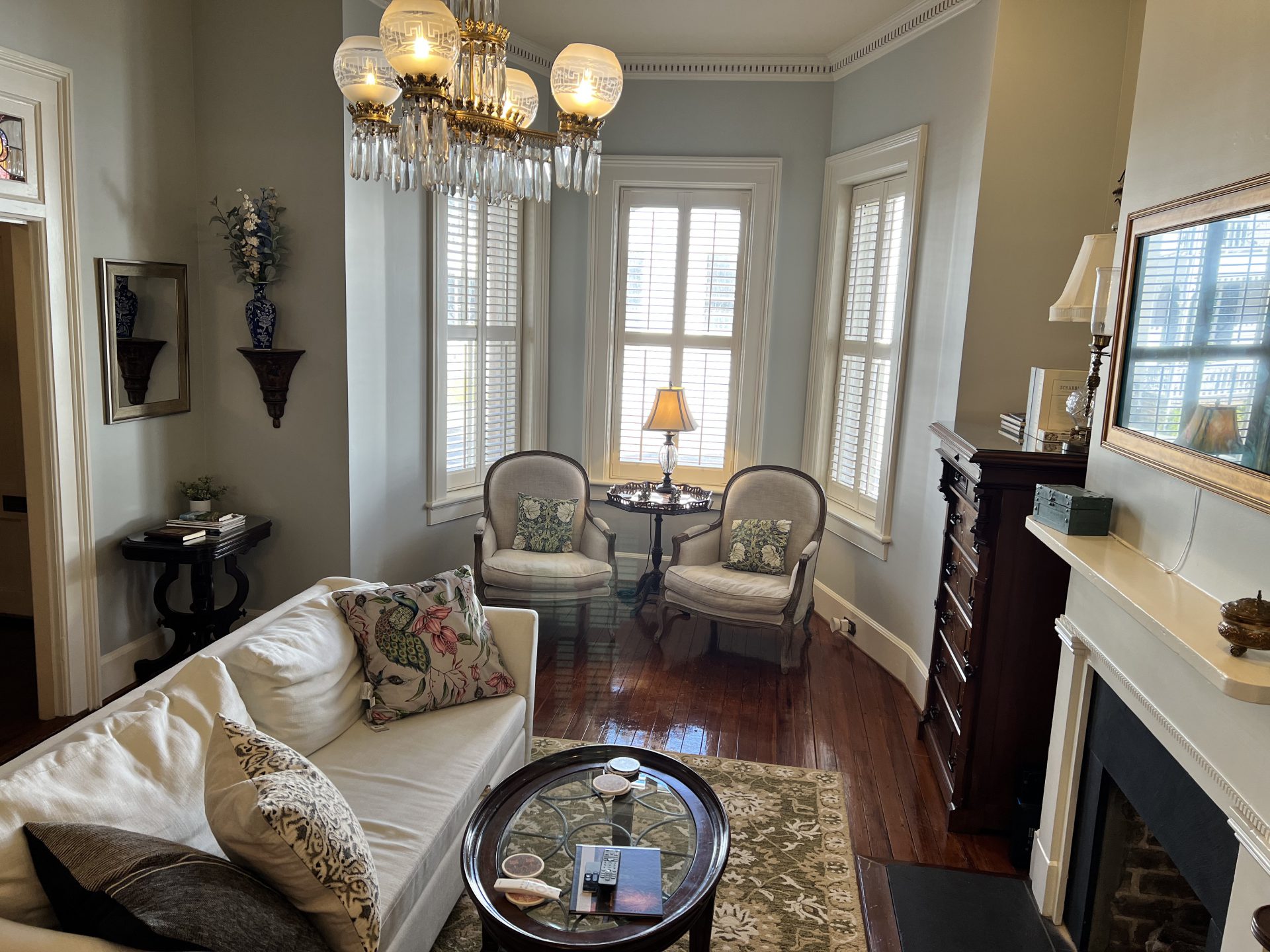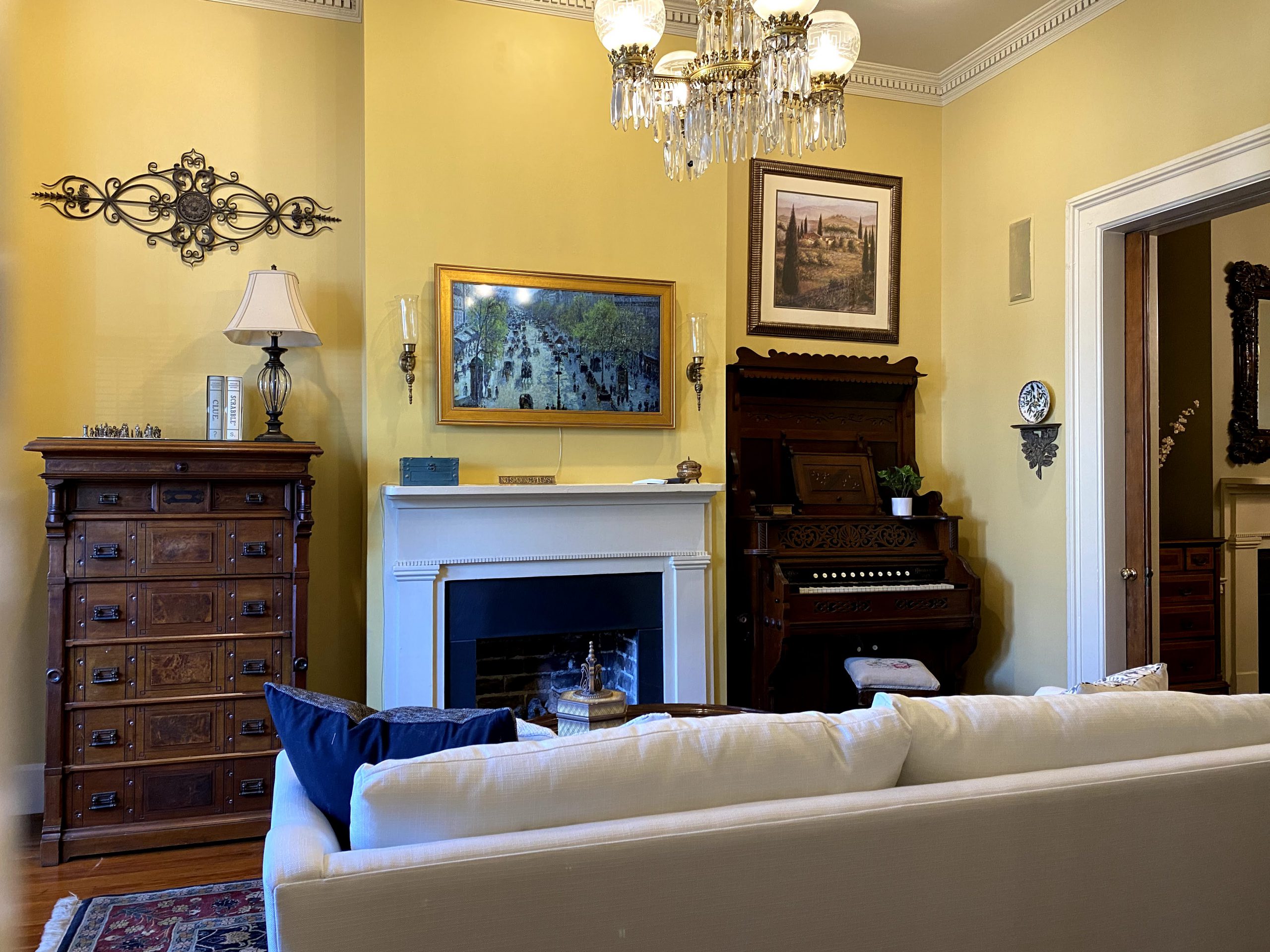Choosing a Television for an Historic House
We want to provide the best television for an historic home, but television viewing angles didn’t get much thought in 1883 when the Broughton Street House was built. This post has been updated to include how it all worked out. Pictures at the bottom!
What we would now call the “living room” was a parlor. The parlor’s primary function was receiving guests. It was a formal room where a host would put their finest seating arranged to facilitate conversation. To that end, hosts would orient seating in front of a fireplace for maximum comfort of the guests. In an exceptionally fancy house there would be two parlors: the formal front, and the informal parlor in the middle. An example of this layout would be the beautiful Andrew Low house.
Owners typically closed off back rooms such as the dining room and kitchen behind doors. In a typical Savannah-style townhouse like the Broughton Street House, there are pocket doors that can be pulled shut. For dinner, preparations would occur behind the closed doors while the guests waited in the parlor. Once ready, the hosts would open the pocket doors and present a bountiful table ready for guests.
Times have changed and people expect to be able to turn on a sporting event, check the news, or binge watch a series when the weather isn’t cooperating. We get it it, we do it, too. So here we’ll discuss choosing the best television for this historic home and how we’re making it work. When you come to Historic Downtown Savannah we want you to have everything you need at the Broughton Street House.
Vacation Sometimes Need Televisions – Like Them or Not
The previous owners of the Broughton Street House had deliberately avoided over-emphasizing the television. I respect that decision. It’s difficult to place today’s giant screen televisions in a historic house in a way that doesn’t dominate the room and draw all attention to the television. At the Broughton Street House the rooms are beautiful and multi-purpose. How many times have you sat down in a living room and realized there’s nothing in your field of view except a giant electronic box? You naturally reach for the remote to figure out how to use it. We’re not going to take that route and instead we’re going to put in the best television for a historic home.
Continue reading “Television in an Historic House”
